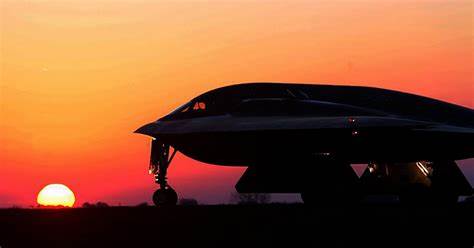
As the United States Air Force forges ahead with its Next Generation Air Dominance (NGAD) program, discussions intensify around the economic viability of investing in sixth and possible seventh-generation fighter jets.

Critics question the strategic value of these future aircraft, positing that simpler, less expensive systems might serve America’s defense interests more efficiently.

The U.S. Air Force’s undisclosed Next Generation Air Dominance program for future fighter aircraft has the potential to become the most costly aircraft initiative to date.

With projected costs for the manned component reaching “multiple” hundreds of millions per unit, as stated by Air Force Secretary Frank Kendall, the expense becomes a focal point of contention.

Kendall highlighted the importance of accompanying these expensive platforms with less costly ones, envisioning autonomous drone wingmen extending the reach of these advanced fighters in combat scenarios.

The pursuit of such technologically advanced warplanes has not gone without criticism. Defense analyst Brandon J. Weichert argues, “What the US needs are less complex, easier to mass produce systems that can simply outmaneuver, outrun, and swarm enemy targets.”

Weichert’s sentiment aligns with that of aviation editor Gareth Jennings, who points out that the delineations between fighter generations may be more of a marketing ploy than a reflection of actual technological leaps.

Even if the Air Force were to be awarded for their, frankly, boring proposals for yet another spate of expensive platforms that will only marginally (if at all) improve US military capabilities over near-peer adversaries, we reached the age of diminishing returns when it comes to military systems some time ago.”

The high cost of next-generation fighters is not unprecedented.

The F-35 Lightning II program currently holds the record for the most expensive military program in history, estimated at $1.7 trillion over the lifespan of the aircraft. The cost of an individual F-35A now hovers around $80 million, making the prospect of spending $300 million on a new stealth fighter quite staggering.

However, it’s crucial to note that the price of the F-35 has significantly decreased due to orders from 17 countries and the delivery of over 1,000 units.

Despite its high operational costs, the F-35 has become one of the most widely used fighters globally, and mass production has contributed to cost reductions.

In contrast, the Next Generation Air Dominance program plans to acquire approximately 200 next-generation fighters, which will operate alongside 300 advanced new Block 4 F-35s and at least 1,000 AI-enabled drone wingmen.

This limited production run will bring the NGAD fighter to a comparable scale, in terms of total numbers, with its predecessor, the F-22 Raptor.

When considering the projected cost of the NGAD in comparison to fighters like the Raptor or even the renowned F-14 Tomcat, the initial sticker shock dissipates, suggesting that the NGAD could offer good value even at $300 million per aircraft.
Relevant articles:
– Forget NGAD: 7th Generation Fighter Would Be a Total Waste of Money, The National Interest
– The Future of Air Combat: Debating the Necessity of 7th Generation Fighters, Trendy Digests
– Future NGAD fighter jets could cost ‘hundreds of millions’ apiece, Defense News
– Why America’s new NGAD fighter could be a bargain, even at $300 million each, Sandboxx

